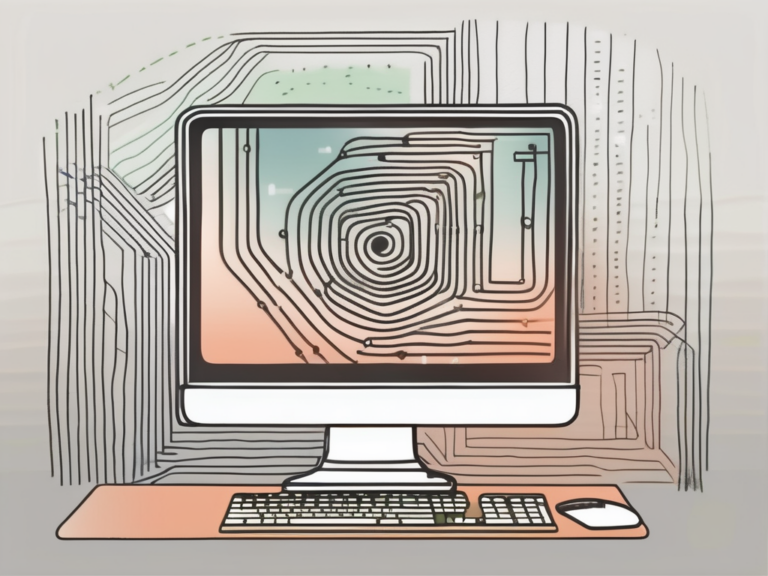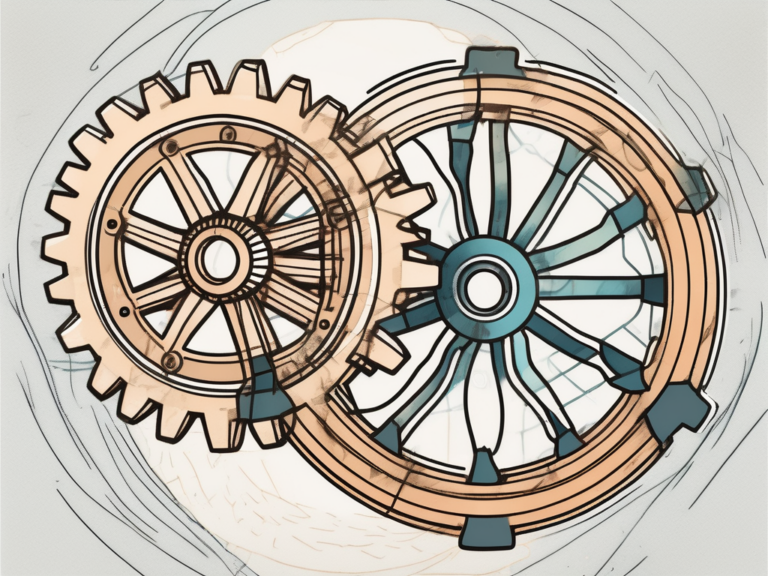What Is a Recursive DNS Server?
A recursive DNS server is an important component of the Domain Name System (DNS) infrastructure. In order to fully understand recursive DNS servers, it is crucial to grasp the basics of DNS and its role in internet communication.
Understanding the Basics of DNS
DNS, or Domain Name System, is a decentralized system that acts as a directory service, translating domain names (e.g., www.example.com) into numerical IP addresses that machines on the internet can understand. It plays a crucial role in facilitating internet communication by linking human-readable domain names to their corresponding IP addresses.
The Role of DNS in Internet Communication
Imagine this: you’re sitting at your computer, eager to visit your favorite website. You type in the domain name in your web browser, and like magic, the website appears on your screen. But have you ever wondered how this seamless connection is established?
Well, that’s where DNS comes into play. When you enter a domain name in your web browser, DNS servers take the stage. These servers are responsible for locating and delivering the corresponding IP address that matches the domain name you entered. It’s like a virtual phonebook, ensuring that websites can be accessed by their domain names, making the internet more user-friendly.
Different Types of DNS Servers
Now that we understand the importance of DNS in internet communication, let’s delve into the different types of DNS servers that work together to make this system possible.
First, we have authoritative DNS servers. These servers are the ultimate source of truth when it comes to domain name information. They hold the official records for specific domain names, providing the IP addresses associated with them. When your web browser sends a request to visit a website, authoritative DNS servers are the ones that respond with the correct IP address.
Next, we have caching DNS servers. These servers store recently accessed domain name information in their memory. So, when you visit a website, the caching DNS server remembers the IP address associated with that domain name. This way, if you visit the same website again, the caching DNS server can quickly retrieve the IP address from its memory, reducing the time it takes to establish a connection.
Lastly, we have recursive DNS servers. These servers are like detectives of the internet. When a caching DNS server doesn’t have the requested domain name information in its memory, it turns to a recursive DNS server for help. The recursive DNS server goes on a mission to find the IP address associated with the domain name by querying other DNS servers until it finds the answer. Once it discovers the IP address, it sends it back to the caching DNS server, which then delivers it to your web browser.
So, the next time you type in a domain name and effortlessly access a website, remember that behind the scenes, DNS servers are working tirelessly to make it happen. They ensure that your web browsing experience is smooth, efficient, and hassle-free.
The Functionality of a Recursive DNS Server
At the heart of the DNS infrastructure lies the recursive DNS server. This critical component is responsible for resolving domain names and retrieving their corresponding IP addresses.
But have you ever wondered how exactly recursive DNS servers work? Let’s dive deeper into the inner workings of these servers to understand their functionality.
How Recursive DNS Servers Work
When a user enters a domain name in their web browser, the query is sent to their Internet Service Provider’s (ISP) recursive DNS server. This server acts as the user’s trusted intermediary in the DNS resolution process.
Now, let’s take a closer look at the step-by-step process that recursive DNS servers follow:
- The recursive server receives the user’s query for a specific domain name.
- It starts by checking its own cache to see if it has previously resolved the IP address for that domain name. If the information is found in the cache, the server can quickly provide the IP address without further queries.
- If the information is not in the cache, the recursive server begins its journey to find the IP address. It starts by contacting the root DNS servers, which hold information about the top-level domains (.com, .org, .net, etc.).
- The root DNS servers respond with a referral to the appropriate top-level domain (TLD) server. For example, if the domain name is example.com, the recursive server will be directed to the .com TLD server.
- The recursive server then contacts the TLD server, which provides a referral to the authoritative DNS server responsible for the specific domain name. This authoritative server holds the final IP address information.
- The recursive server finally contacts the authoritative DNS server and retrieves the IP address for the requested domain name.
- Once the IP address is obtained, the recursive server sends it back to the user’s web browser, allowing the browser to establish a connection with the desired website.
This intricate process involves iteratively contacting authoritative DNS servers to retrieve the necessary information. It ensures that users can access websites by simply typing in domain names, without having to remember complex IP addresses.
The Importance of Recursive DNS Servers
Recursive DNS servers play a crucial role in the efficient functioning of the internet. Their caching mechanism is particularly significant in enhancing the overall user experience.
When a recursive DNS server resolves a domain name, it stores the IP address in its cache. This cache allows subsequent requests for the same domain name to be answered quickly, without repeating the entire resolution process. As a result, users experience faster response times and improved internet browsing speeds.
Moreover, recursive DNS servers also contribute to the security and stability of the DNS infrastructure. They implement various techniques, such as DNSSEC (Domain Name System Security Extensions), to protect against DNS spoofing and other malicious activities.
So, the next time you enter a domain name in your web browser, remember the vital role played by recursive DNS servers in seamlessly translating that name into a reachable IP address.
The Difference Between Recursive and Iterative DNS Queries
While recursive DNS queries are the core functionality of recursive DNS servers, it is essential to understand the concept of iterative DNS queries to fully grasp the differences between the two.
An Overview of Recursive DNS Queries
A recursive DNS query is initiated by a DNS client, typically an end-user device or a DNS resolver. The recursive server, as mentioned earlier, performs the resolution process on behalf of the client by contacting authoritative DNS servers until it obtains the final IP address.
Let’s dive a bit deeper into the inner workings of recursive DNS queries. When a DNS client sends a recursive query to a recursive server, the server begins by checking its local cache to see if it already has the answer. If the answer is not found in the cache, the recursive server starts the resolution process by contacting the root DNS servers. These root servers provide information about the top-level domain (TLD) servers responsible for the requested domain.
Once the recursive server obtains the TLD server information, it sends another query to the TLD server. The TLD server then responds with the authoritative DNS server responsible for the specific domain. The recursive server then sends a query to the authoritative server, which finally provides the IP address associated with the requested domain. This IP address is then returned to the DNS client, completing the recursive DNS query.
An Overview of Iterative DNS Queries
In contrast, an iterative DNS query is a less involved process. The DNS client, instead of relying on a recursive server, contacts a DNS resolver directly. The resolver provides the best information it has available, even if it does not have the final answer. The client then iteratively contacts other DNS resolvers until it obtains the complete resolution.
Now, let’s explore the iterative DNS query process in more detail. When a DNS client sends an iterative query to a resolver, the resolver first checks its local cache for the answer. If the answer is not found, the resolver contacts the root DNS servers to obtain the TLD server information. However, unlike the recursive query, the resolver does not continue the resolution process on behalf of the client.
Instead, the resolver provides the IP address of the TLD server to the client, which then sends a query directly to the TLD server. The TLD server responds with the authoritative DNS server responsible for the domain. The client then sends a query to the authoritative server, which provides the IP address associated with the requested domain. This process continues iteratively until the client obtains the complete resolution.
The Pros and Cons of Using Recursive DNS Servers
While recursive DNS servers offer several benefits, it is important to consider both the advantages and disadvantages of utilizing them in the DNS infrastructure.
Let’s dive deeper into the advantages of using recursive DNS servers. One of the key benefits is that these servers enhance internet performance by storing resolved IP addresses. This means that when a user makes subsequent requests, the server already has the IP address on hand, resulting in faster resolution times. This can significantly improve the overall browsing experience, especially for websites with multiple resources that require frequent DNS lookups.
Moreover, recursive DNS servers simplify the DNS resolution process for users. Instead of contacting authoritative servers directly, users can rely on the recursive server to handle the resolution on their behalf. This eliminates the burden of understanding the complex hierarchy of DNS servers and reduces the time it takes to retrieve the desired information. By providing a centralized point of resolution, recursive DNS servers streamline internet connectivity and make it more accessible to a wider range of users.
However, it’s essential to consider the potential downsides of using recursive DNS servers. One of the main concerns is that they can become a bottleneck in the DNS infrastructure. Since all DNS resolution requests pass through the recursive server, it can experience heavy traffic, leading to slower resolution times or even service disruptions. To mitigate this issue, network administrators need to carefully manage the server’s resources and ensure that it can handle the incoming requests efficiently.
Another disadvantage of recursive DNS servers is their vulnerability to various security threats. As a central point of resolution, these servers can be attractive targets for malicious actors. They may attempt to exploit vulnerabilities in the server software or launch distributed denial-of-service (DDoS) attacks to disrupt its operation. To address these security concerns, robust protective measures, such as implementing firewalls, intrusion detection systems, and regular security audits, are necessary to safeguard the recursive DNS server and the entire DNS infrastructure.
Security Concerns with Recursive DNS Servers
As a critical component of the DNS infrastructure, it is essential to address the potential security concerns associated with recursive DNS servers.
Recursive DNS servers play a vital role in the functioning of the internet by resolving domain names into IP addresses. However, their significance also makes them an attractive target for malicious actors seeking to exploit vulnerabilities in the system.
Potential Risks of Recursive DNS Servers
One notable risk involving recursive DNS servers is DNS cache poisoning, where attackers inject false information into the cached data. This can redirect users to malicious websites or intercept their internet traffic, compromising their security. Imagine innocently typing in the URL of your favorite online store, only to be redirected to a fraudulent website designed to steal your personal information.
Additionally, recursive DNS servers can be targeted by distributed denial of service (DDoS) attacks, potentially disrupting the DNS resolution process. These attacks flood the server with an overwhelming amount of traffic, rendering it unable to respond to legitimate DNS queries. The consequences of such an attack can be far-reaching, impacting not only individual users but also entire organizations or even nations.
Measures to Enhance Security of Recursive DNS Servers
To mitigate these risks, it is crucial to implement security measures for recursive DNS servers. Regular software updates are essential to patch any vulnerabilities that may be discovered. By staying up-to-date with the latest security patches, server administrators can ensure that their systems are protected against known threats.
In addition to software updates, implementing rate limiting can help mitigate the impact of DDoS attacks. By setting limits on the number of DNS queries a server can handle within a specific time frame, administrators can prevent the server from being overwhelmed by an excessive amount of traffic. This not only helps maintain the server’s performance but also reduces the risk of it becoming a target for attackers.
Furthermore, utilizing DNSSEC (DNS Security Extensions) can provide an additional layer of security for recursive DNS servers. DNSSEC ensures the authenticity and integrity of DNS responses by digitally signing them. This prevents attackers from tampering with the DNS data and helps users trust that the information they receive from the server is legitimate.
By implementing these measures and staying vigilant about emerging threats, administrators can enhance the security of recursive DNS servers and contribute to a safer and more reliable internet experience for users worldwide.
Future Trends in Recursive DNS Technology
The field of recursive DNS technology is constantly evolving, adapting to the changing needs of the internet. Several trends and advancements are shaping the future of recursive DNS servers.
Technological Advancements Impacting Recursive DNS Servers
Advancements in technologies such as machine learning and artificial intelligence are revolutionizing DNS server operations. These technologies can enhance the efficiency of DNS resolutions, reduce query response times, and improve the overall accuracy of DNS server performance.
Machine learning algorithms can analyze vast amounts of DNS data to identify patterns and predict future queries. By doing so, recursive DNS servers can proactively cache and resolve frequently requested domain names, reducing the need for iterative queries and improving response times. Additionally, artificial intelligence can help detect and mitigate DNS-based attacks, such as cache poisoning or distributed denial-of-service (DDoS) attacks, by continuously monitoring network traffic and identifying suspicious patterns.
The Future of DNS: Predictions and Possibilities
Looking ahead, the future of DNS holds various possibilities. One such possibility is the widespread adoption of DNS over HTTPS (DoH) and DNS over TLS (DoT), which aim to encrypt DNS traffic to enhance privacy and security further. These protocols provide an additional layer of protection against eavesdropping and tampering, ensuring that DNS queries and responses remain confidential and authentic.
Furthermore, as internet usage continues to grow exponentially, DNS server infrastructure will need to scale to meet the increasing demands. This scalability can be achieved through the deployment of distributed DNS architectures, utilizing geographically dispersed servers to handle DNS requests efficiently. This approach not only improves performance but also enhances fault tolerance, ensuring that DNS services remain available even in the face of network disruptions or server failures.
Moreover, with the rise of Internet of Things (IoT) devices and the proliferation of smart homes and cities, DNS servers will play a crucial role in managing the vast number of connected devices. Recursive DNS servers can help facilitate seamless communication between IoT devices by efficiently resolving their domain names and enabling them to connect to the appropriate resources.
In conclusion, a recursive DNS server plays a crucial role in the DNS infrastructure, resolving domain names and retrieving their corresponding IP addresses. Understanding the basics of DNS, the functionality of recursive DNS servers, and the differences between recursive and iterative queries is essential. While recursive DNS servers bring several advantages, they also present potential security concerns. By implementing appropriate security measures and staying abreast of technological advancements, the future of recursive DNS technology looks promising.






